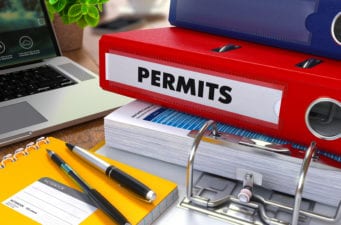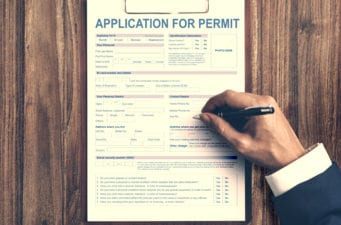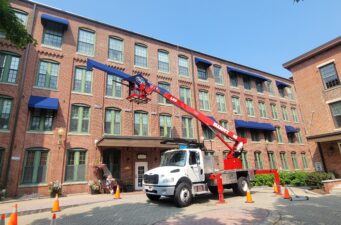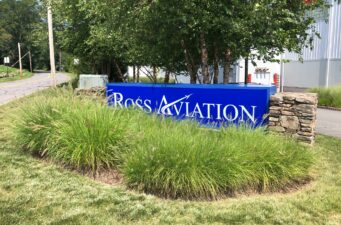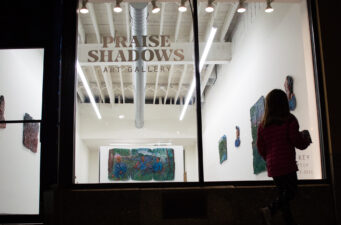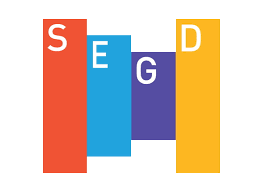Permit Research
A Focused Approach to Securing Permit Approvals
Obtaining approval for business signage is a complex process that involves working with many different departments, agencies, and governments. Permit approval also requires that sign designs and installations meet specific limits, requirements, and standards.
Metro leverages our expertise to secure signage approvals which are an important part of our business. We have years of experience working with the municipalities in our area and understanding unique needs to meet zoning regulations.
Our Process
We communicate with our clients to identify and define the goals of their proposed signage. Next we filter those goals through applicable sets of local ordinances and regulations to develop compliant sign designs that all stakeholders can accept.
It’s rare that we have to tell our clients that we can’t find a way to design an effective, attractive sign that meets zoning requirements. But when we encounter a potential snag, we’ve got the knowledge, expertise, and experience to put together a package for a special permit or variance to the bylaw.
Often, our clients aren’t even aware of the government regulations that influence how our final design plans accommodate their signage needs.
Permitting: A Complicated Process
Although permitting is a complicated process, Metro’s knowledge helps to accelerate approvals. We’ve also built relationships with the zoning officers over time. They know we’ll provide them with what they need to process the requests — and they trust that we’ll do the job right.
Requirements for Permit Compliance
Obtaining a permit sounds like it should be a quick, easy process. But many times, it’s not — and it’s complicated by the number and type of requirements and permits needed:
- Design review
- Engineered Stamped Drawings (ESD)
- Sign permit
- Electrical permit
- Sidewalk or hoisting permit
- Police detail
- Dig Safe
Different Requirements for Different Places
Some areas have regulations that change based on sign type. One district allows flat, blade, motion, window, and banner signs and awnings. That same district prohibits waterfall awnings, box, programmed, freestanding, or overly large signs, billboards, sandwich boards, or off-premise advertising. The district has also classified certain streets as “view corridors,” forbidding signs that exceed some of the usual limits.
Even within a city like Boston, each district has its own requirements. And Boston’s divided into 9 different districts:
- Aberdeen Historic District in Brighton
- Back Bay Architectural District – where the residential and commercial districts have different signage regulations
- Downtown Crossing District
- Bay Village Historic District
- Historic Beacon Hill District
- Fort Point Channel Landmark District on the South Boston Waterfront
- Mission Hill Triangle Architectural Conservation District
- South End Landmark District
- St. Botolph Architectural Conservation District
Approval Process
Getting government and municipal permission to install signage for businesses and organizations requires research, knowledge, and legwork. Here’s just one example of the process we follow:
In Boston, Metro submits an application to the Boston Planning and Design Agency (BPDA) for their Comprehensive Sign Design Review process, which sometimes takes several attempts before approval is granted.
If a sign may interfere with the “public right of way,” we must submit the designs for additional approval to the Public Work Department. Next we submit designs to the Inspection Services Department for its evaluation and approval. Additionally, we must submit signs that a client plans to install in a historically classified property to the Boston Landmarks Commission.
Crossing ‘T’s’ and Dotting ‘I’s’
Whenever we’re seeking a permit for a client’s signage, we must also provide the following documentation:
- Landlord Authorization form
- Multiple copies of scale drawings of the proposed signage
- Specifications of all sign sizes and construction materials
- Photos of the proposed installation site
- Detailed drawings of our specific installation plans
- Attachment details with respect to the sign install
When a project includes wall signs that project outward 5 inches or more — plus awnings, blade signs, roof-mounted signs, and signs mounted over a public way — we also must include Engineered Stamped Drawings (ESD) to verify the projected wind and snow load. Illuminated signs and signs with additional external lighting also require additional specific electrical permits.
Copyright 2022 MetroSign and Awning, All rights reserved | Privacy Statement | Terms of Use
